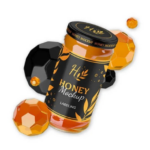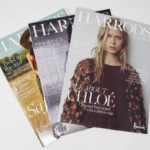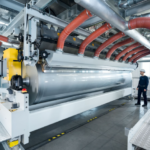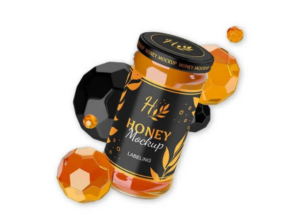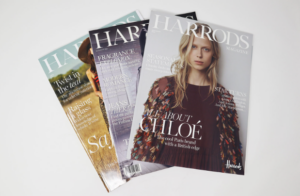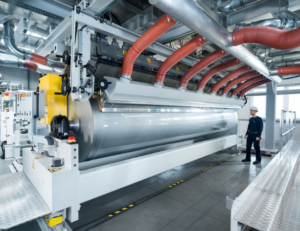An Introduction to BOPP Holographic Film
BOPP Holographic films are fragile, flexible plastic films that have been micro-embossed with a holographic image or pattern. A holographic BOPP film is mainly designed to wrap gifts and other products.
Uses
BOPP holographic film is most widely used for wrapping gifts and packaging candies. These films can be laminated to different materials for various packaging applications. Also, they can be “pressure sensitized” to make labels or sticker material. Another exciting use of BOPP holographic film is in creative photography.
Before we learn about this use of film, first look at the embossing process used for making this film. Specific holographic printing techniques are employed to develop different patterns on these films. The embossing process creates a mark (such as dots or cracks) or an image (such as a car) which can provide a 3-D effect or spectral (rainbow) coloring.
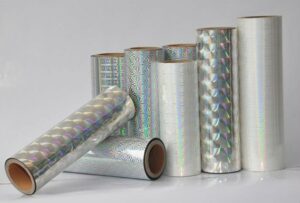
BOPP Holographic Films
Embossing Process
The embossing process is similar to cutting tiny grooves into the surface of the BOPP film at various angles and in different shapes. The micro-embossed tracks cause “diffraction” of steady white light into spectral coloring. It is similar to diffusing white light into spectral colors by a crystal prism.
The images and the colors you see depend upon the position and angle from which you are looking at the holographic film. The image and spectral coloring will change as you view the grooves at different places and angles.
Most BOPP holographic films are metalized with aluminum on the embossed surface.
It protects the embossed texture and reflects light through the embossed surface, providing a more colorful and brighter image. It can be beneficial in creative photography.
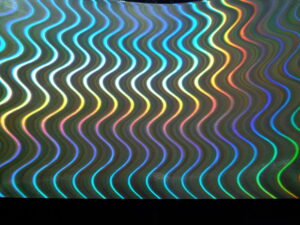
Holographic Film
What Is Creative Photography?
Creative photography is a technique by which you combine different shapes, colors, and forms of ordinary moments and turn them into creative arts using your photography skills.
This type of photography demands a unique approach to seeing things and projecting an innovative image altered from reality. Further, it permits you to experiment with new ideas and helps you create impressive imagery.
In creative photography, you intentionally use an element to boost the uniqueness of your image. The feature could result from a simple workflow you followed to obtain that exclusive image or an intricate post-processing method that enriches your image’s mood and texture.
For instance, more than getting the perfect exposure in the camera, you need to think of ways by which you can introduce a perspective into the image. It makes it look artistic and distinguishes it from conventional photography.
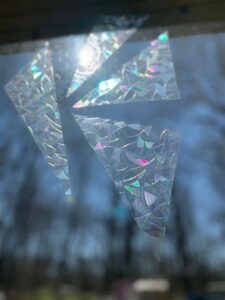
Creative Photography with BOPP Holographic Film
Techniques for Creative Photography
You can use the following techniques for creative photography.
Use of Lights
The direction, hardness or softness, and light temperature can all influence an image’s mood and feeling. Sidelight, for instance, evokes feelings of romance and nostalgia, whereas light from below creates a sense of terror. Hard shadows generate more of a sense of drama than soft shadows, and excellent color tones convey more negative emotions than warm light.
You can create stunning spiral light photography using extended exposure techniques. You can do this by opening your camera shutter to the upper limit to record the moving light sources like faint bands. Moreover, you can turn your lights on and off to generate a staggering pattern.
Refraction Photography
Refraction photography refers to photos that confine a refraction effect, where light is bent in glass, water, or some other surface to make a subject appear very large, very small, or otherwise distorted.
Split water onto a transparent surface with a spray bottle or a syringe, and then add an exciting item below, such as a flag or a flower. Get as close as you can with a macro lens, then shoot! You will get a beautiful image.
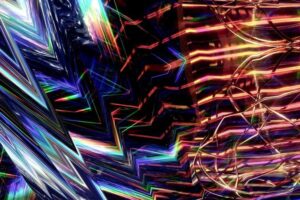
Light Refraction Photography
Creative Backgrounds
Backgrounds can make or break a portrait image, yet finding the right background to complement and enhance your portrait subjects is necessary for creative photography.
For instance, If you’re looking to create moody portraits and you don’t have much in the way of a studio setup, then here’s a portrait background idea that guarantees excellent results:
You can use some dark, textured fabric, like a burlap sack, a textured blanket, or even an item of clothing to create a dark background. Then place it directly at the back of your subject. Ensure the fabric is fairly monochrome (solid blues, greens, or browns work great).
And ask your subject to dress in similarly muted clothing. Use a narrow aperture if you want the background texture to come through, as it’ll add a bit of interest to the portrait without overpowering the subject.
Using BOPP Holographic Film in Creative Photography
BOPP holographic film can be used in creative photography. You can get this film in many craft and art-supply stores. This film will help you to have fun photographing distorted and nonfigurative images.
BOPP holographic film is a smooth and glossy film. It can be draped, rippled, pinched, or laid flat for snapping pictures. This film can also work as a perfect mirror. To enjoy this feature of BOPP film, you simply have to spread it flat on a table. It works best for reflecting things with different angles of distortion. Using BOPP holographic film requires proper care as it can easily fold. Moreover, it is susceptible to showing fingerprints.
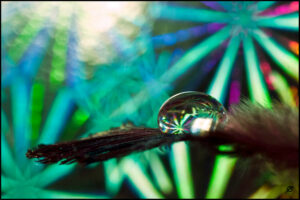
BOPP Holographic Film as Background
Tips for using BOPP holographic film in creative photography:
If you want your BOPP film to work perfectly in creative photography, then you should follow the following guidelines.
- It would be best if you prefer a digital camera while using this film for making photographs.
- Always turn your flash off; it will never help when photographing BOPP holographs.
- It would help if you used an excellent steady tripod for this purpose. Minor shakes can cause ugly blurring in a photo.
- Take your pictures in a dark room (except for the single light used to illuminate your holographic film) so that you won’t see reflections of the space on the surface of your hologram.
- If you can’t make your room adequately dark, then take a large sheet of black cloth and cut a slit in it big enough to pass the lens of your camera through.
- For lighting, use a single halogen bulb plugged into a dimmer so that you get a transparent single light source and can control the brightness to get the best image.
- Optileds can also be used to provide narrow-band replay light that results in less haze and clearer, more profound hologram reconstruction.
What Can You Reflect with BOPP Holographic Film?
For this purpose, you can use almost any small object and more colorful subject such as:
- Glass bottles
- Flowers
- Jewelry
- Fruit
- Nicknacks
BOPP Holographic Film Brainstorming
1. Reflection
You can get a fantastic image by reflecting your object through holographic film. Let’s see how it works.
→ Cover your table with BOPP holographic film, and keep the film flat and smooth for good results. Then put anything on it to capture its reflection.
→ You can also photograph the object’s reflection by keeping it in front of a plain background and then exposing it with holographic film-covered cardboard at different angles.
→ Drape the BOPP holographic film over the back of a chair and then place the object to capture its reflection.
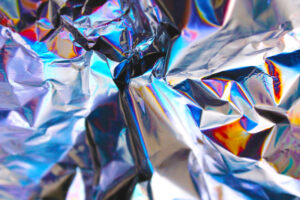
Creating Reflections with BOPP Holographic Film
2. Using Colored Paper as an Object
Tape numerous pieces of colored paper in varying sizes and shapes to cardboard and let the BOPP film create its reflection. Tilt the cardboard at different angles to capture different sides of it.
You can achieve vibrant abstractions by bending, twisting, pinching, or creasing the BOPP holographic film.
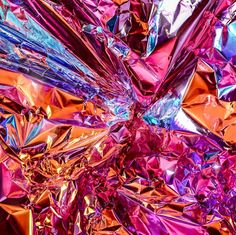
Colors Reflecting on Holographic Film
3. Placing Pebble on Cardboard for Creative Photography
Take a small pebble and put it on cardboard. Then, cover this pebble with a 12-inch square of BOPP holographic film. Set colorful papers at an angle to the BOPP holographic film and then get different pictures by pinching and pulling the film into different configurations.
4. Use of Projector
You can also use a slide projector with colorful slides to capture beautiful images by placing BOPP holographic film on a table or the floor underneath the projection screen. You should turn off the room lights to get good results.

